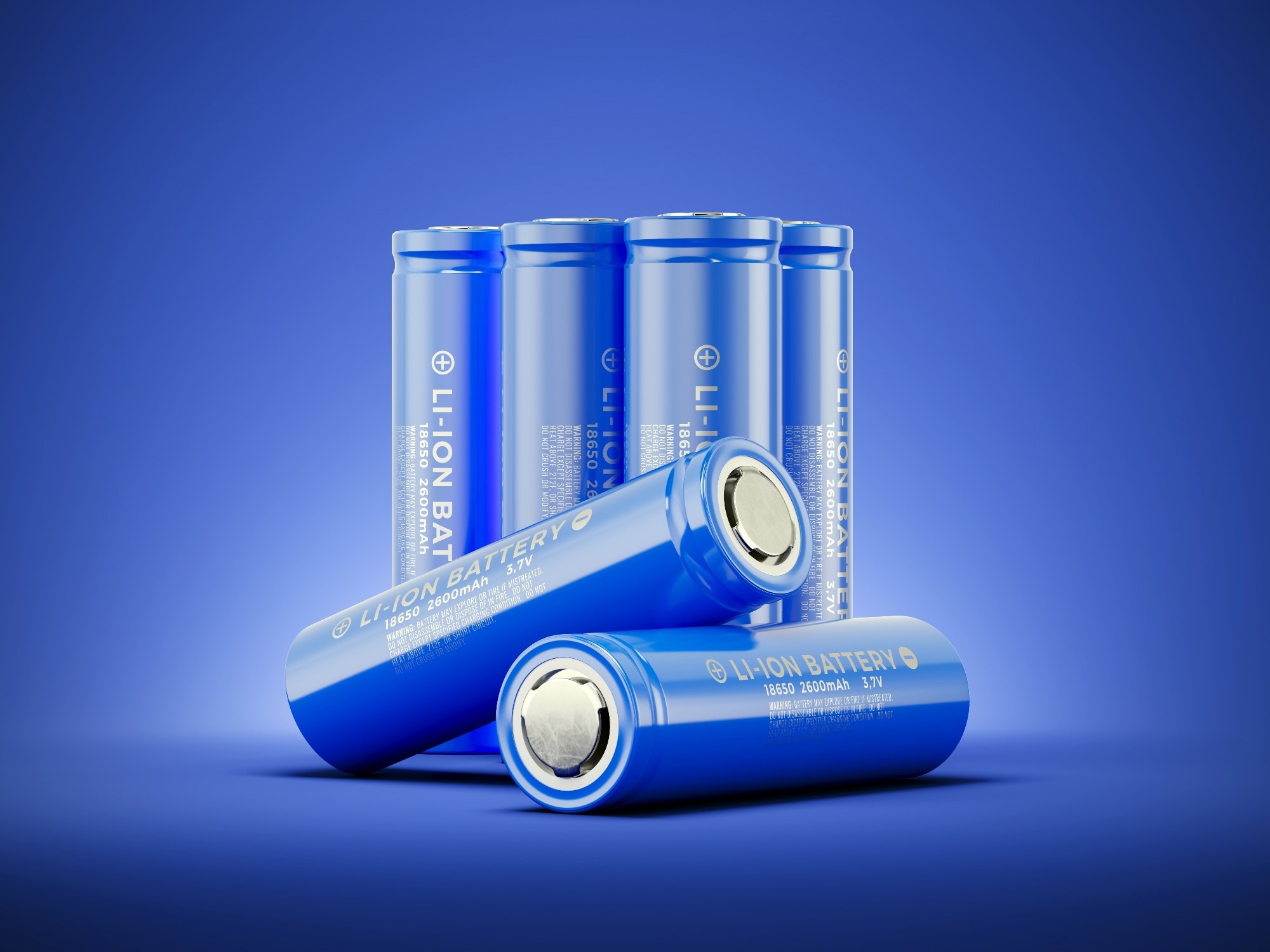 By Muhammad OsamaReviewed by Lexie CornerJun 6 2025
By Muhammad OsamaReviewed by Lexie CornerJun 6 2025A recent study published in Nature Communications introduces a new method to improve lithium-ion battery performance.
Researchers applied high-entropy doping (HED) to niobium pentoxide (Nb₂O₅) electrodes. By doping Nb₂O₅ with a mix of elements, they aimed to create materials that charge quickly without compromising structural integrity.
 Image Credit: Sashkin/Shutterstock.com
Image Credit: Sashkin/Shutterstock.com
Challenges of Doping in Complex Materials
Doping, the intentional addition of impurities into a material, is a common way to tailor a material's properties. It is widely used in semiconductors, alloys, and luminescent materials to enhance conductivity, strength, or optical behavior.
However, Nb₂O₅ presents challenges due to its complex phase behavior and high-valence cations. These features make it difficult to form stable solid solutions. Conventional doping methods often produce unwanted impurity phases or trigger phase changes, limiting improvements to Nb₂O₅’s electrochemical performance. This has hindered its use in fast-charging batteries.
Exploring High-Entropy Doping in Nb₂O₅
To address these challenges, researchers turned to HED. Instead of using a few specific dopants, they introduced many different elements at once. The concept is based on the idea that increased system complexity can lead to new behaviors such as phase stabilization and symmetry breaking. This aligns with theories like the “More is Different” principle.
Nb₂O₅ was chosen as a model because it is difficult to dope effectively. Researchers created doping solutions with up to 20 metallic elements in equal ratios. They excluded radioactive, precious, or chemically similar elements to niobium to maximize diversity in ionic size and valence. They varied both the number and concentration of dopants (1–3 mol%) to study how these factors affected the material’s phase behavior.
The synthesis involved dissolving niobium oxalate with the dopants, evaporating the solvent, and annealing the resulting material at high temperatures (up to 1050 °C) in either air or an inert atmosphere. The team then analyzed the materials using several techniques, including X-ray diffraction (XRD), scanning and transmission electron microscopy (SEM, TEM), Raman spectroscopy, X-ray photoelectron spectroscopy (XPS), and electron paramagnetic resonance (EPR).
Phase Stabilization and Performance Improvements
Doping Nb₂O₅ with 15 different elements at 3 mol% prevented the expected transformation to the stable H-phase at high temperatures. Instead, the material stabilized in a structure resembling the metastable M-phase. This effect—termed the “HED effect”—altered the normal phase transition path and favored a structure that supports better lithium-ion movement.
Mapping the number and concentration of dopants revealed a specific “HED region.” In this range, the material formed a nearly pure high-entropy phase with few impurities. Adding more dopants increased phase purity up to a point, but excessive complexity led to impurity formation again. This indicated an optimal dopant range for achieving the HED effect.
Spectroscopy showed that HED-Nb₂O₅ had different local bonding compared to traditional phases. It featured strong Nb=O bonds and a complex arrangement of oxygen vacancies. EPR confirmed the presence of multiple types of oxygen vacancies and a higher overall vacancy concentration, suggesting greater structural complexity.
Electrochemical testing demonstrated that HED-Nb₂O₅ delivered excellent performance as a battery anode. It maintained a capacity of 233.9 mAh g⁻¹ at 1 A g⁻¹ and still delivered 88.9 mAh g⁻¹ at an ultrafast rate of 40 A g⁻¹. Compared to undoped Nb₂O₅, it showed better rate capability and long-term cycling stability. After 2,000 cycles at 5 A g⁻¹, it retained 85 % of its original capacity with nearly 100 % Coulombic efficiency.
These improvements were attributed to faster lithium diffusion and smaller, more uniform particles that shortened diffusion paths. Operando XRD revealed that while the general phase evolution remained similar, HED improved the kinetics under high-rate conditions.
Applications for Energy Storage and Material Design
This approach offers a practical way to enhance materials that are difficult to dope. By focusing on dopant variety and number rather than specific chemical properties, HED uses configurational entropy to stabilize desirable phases and improve performance.
The technique could benefit not only lithium-ion batteries but also other functional materials such as semiconductors, luminescent compounds, and topological materials. These fields may similarly benefit from entropy-driven phase stabilization and new functionalities.
Download your PDF copy now!
Conclusion and Future Direction in Materials Science
This work demonstrates that HED can significantly improve the electrochemical performance of Nb₂O₅, making it more suitable for fast-charging lithium-ion batteries. The findings support the use of entropy as a design tool for complex materials.
Future research should focus on modeling phase transitions and thermodynamic behavior. Tools like operando synchrotron X-ray diffraction can help clarify how HED affects structural dynamics. Overall, configurational entropy offers a promising path for developing advanced materials with tailored properties, opening new possibilities in materials science and energy technology.
Journal Reference
Xu, J., et al. High-entropy-doping effect in a rapid-charging Nb2O5 lithium-ion battery negative electrode. Nat Commun 16, 4977 (2025). DOI: 10.1038/s41467-025-60186-6, https://www.nature.com/articles/s41467-025-60186-6
Disclaimer: The views expressed here are those of the author expressed in their private capacity and do not necessarily represent the views of AZoM.com Limited T/A AZoNetwork the owner and operator of this website. This disclaimer forms part of the Terms and conditions of use of this website.